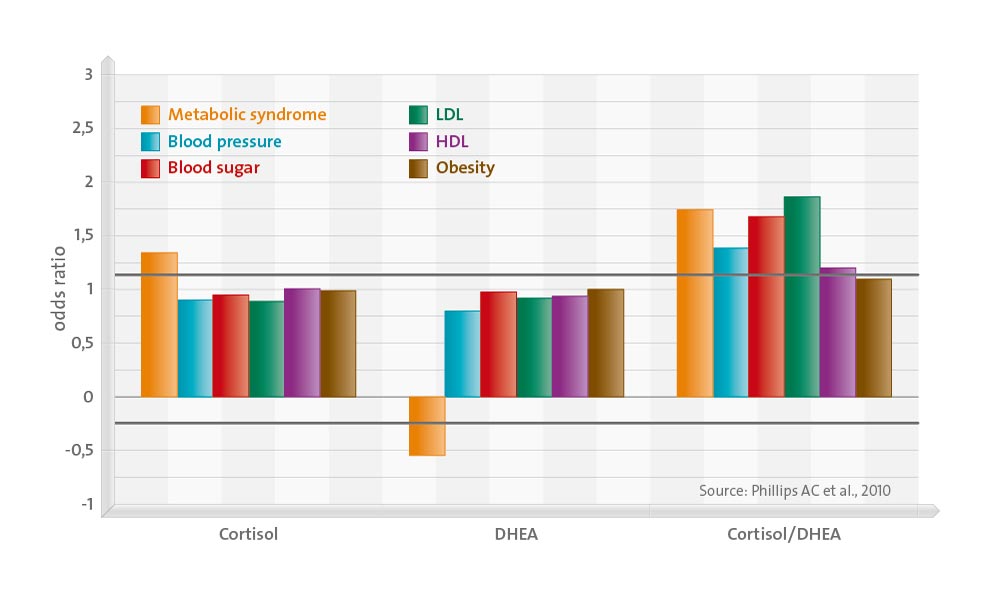Objectives
The aim of these analyses was to examine the association of cortisol, DHEAS and the cortisol:DHEAS ratio with the metabolic syndrome (MetS) and its components.
Design
The analyses were cross-sectional.
Methods
Participants were 4255 Vietnam era US army veterans. From military service files, telephone interviews and a medical examination, occupational, socio-demographic and health data were collected. MetS was ascertained from data on body mass index; fasting blood glucose or a diagnosis of diabetes; blood pressure or a diagnosis of hypertension; high-density lipoprotein cholesterol; and triglyceride levels. Contemporary morning fasted cortisol and DHEAS concentrations were determined. The outcomes were MetS and its components. Analysis was by logistic regression, first adjusting for age and then additionally for an array of candidate confounders.
Results
Cortisol, although not in the fully adjusted analysis, and DHEAS were both related to MetS. Whereas high cortisol concentrations were associated with an increased risk of MetS, high DHEAS concentrations appeared protective. By far, the strongest associations with MetS were observed for the cortisol:DHEAS ratio; the higher the ratio, the greater the risk of having MetS. The ratio was also significantly related to four of the five MetS components.
Conclusions
The cortisol:DHEAS ratio is positively associated with MetS. Prospective analyses are needed to help untangle direction of causality, but this study suggests that the cortisol:DHEAS ratio is worthy of further study in this and other health contexts.
